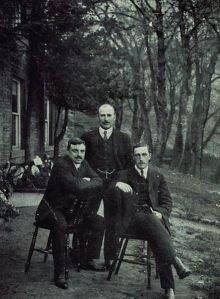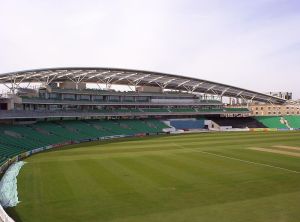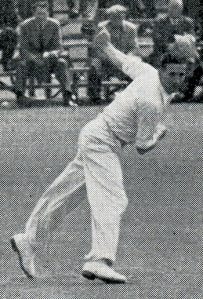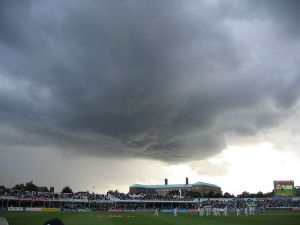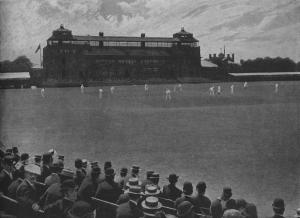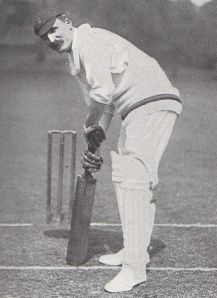Honestly, I feel a little silly writing a post in defense of English County Cricket. Mostly because I am so terribly new to the sport: I am not a member, I have never attended a match, and I don’t even support a specific club.
I also feel silly because, shoot, County Cricket has been around for 130 odd years: does it really need defending? It’s older than all of us here.
But County Cricket has had a bad week…there was the adoption of the Morgan Report and the stripping of two Championship matches, there was Westfield’s admission of guilt in the match fixing scandal, and there was Gloucestershire’s failure to gain support for its necessary ground upgrades…so I thought I should at the very least offer my meager defense of this wonderful cricketing tradition:
Throughout much of November and December, I wrote mini-histories of each of the 18 counties. I wrote about the grounds, the players, the number of championships won by each county. And in doing so, I gained a deep respect for the competition – or I should say a deeper respect, as I had been a fan of the County game since the beginning.
Some of these County Clubs, I learned, have been in existence since the 1830s. In his passionate defense of County Cricket on the Switch Hit Podcast, UK Cricinfo editor David Hopps claimed that the Morgan Report was destroying 130 years of tradition. Wrong. Try 180 years in come cases.
But does the Morgan Report really do that? Does it really ruin the County game? Will two less matches, eight fewer days of first-class cricket, really make a difference?
Some say England’s strong first-class tournament is the reason behind their recent success at the international level – but what about 10, 15 years ago when England were positively rubbish? Were there not a full 16 matches of first-class cricket then?
And some will say, rightfully so, that the clubs need the money from the increased t20 matches taking the place of the first-class matches, that the County game will not exist AT ALL without the additional revenue. And as such a sacrifice is necessary.
Sure, people love to shit on the game’s shortest format, and we all love to thumb our noses at the Champions League. But those two things earn clubs a great deal of money.
And some will say that change can be a good thing, that traditionalists need to stop clucking at any change to the tournament. That County Cricket now exists in an extraordinarily competitive entertainment marketplace. This ain’t 1952 anymore. Change. Or die.
And those are all points well heard, and well taken. But I also say: rubbish.
England have played 915 test matches, winning 326 of them. Neither of those records exist without a strong first class County Championship.
Furthermore, I honestly believe that Twenty20 is a fad, that multiple day cricket is still the FUTURE of the game, and trimming your schedule now is shortsighted, as you will surely have to put those two matches back on the schedule sooner or later.
And I realize there are financial concerns at stake. But there has to be a better way to reclaim lost revenue. These clubs and their championship have existed through two world wars, surely they can weather a recession and increased competition without having to completely alter the nature of their primary tournament.
I do this a lot on here, I know, I criticize sans proposal, but there simply has to be a way to increase profits without needing to add two Twenty20 matches. And, really, for crying out loud, the vast majority of the t20 matches during the second half of the season are meaningless anyway, so all you are really doing is adding two additional meaningless matches.
Last I heard, cricket fans aren’t all that interested in meaningless matches.
I might not be able to specifically suggest money making schemes for the clubs, but I can make suggestions to those fans up in arms: support your club. Attend first class matches, buy a jersey, become a member, go to concerts at the ground. Put your money where your mouth is – and I will do it, too, I will quit with the lip service. As soon as I done here, I will head over to an online club shop and buy a kit (really unfortunate though how ugly most of them are – how can you screw up a white polo? – maybe I will get a sweater instead.)
The third and final argument in favor of the Morgan Report is that clubs need to change formats, that traditionalists need to get over themselves, and I just think that is simple fucking bullshit, excuse me.
Traditions are extraordinarily important to the long term survival of the County Championship. Changing it does not support it – in fact it does the opposite, it weakens it, it leaves it open to further, deeper wounds.
One of, if not the core strength of first-class cricket is its tradition. It is a generational level of passion that exists nowhere else in sport.
County Cricket needs its traditions, more so than it needs additional revenue from the flippin’ Champions League.
Which segues nicely into the second piece of bad news delivered to County Cricket this week: Gloucestershire.
Poor, hapless Gloucestershire. Never won a County Championship, and now sadly probably never will. Without the necessary upgrades to its ground, making it ODI friendly, the club simply cannot compete.
This, THIS, is where the ECB needs to step in. This is where we need a flippin’ Morgan report.
The ECB needs to help its counties improve their grounds so that ALL eighteen counties are capable of hosting international matches. Spread the love, and the profits.
Ground improvements, not more Twenty20s, English Cricket Board. Gloucestershire’s long, long, LONG suffering fans thank you in advance.
Unfortunately, that will probably never happen, and so Gloucestershire’s supporters will have to continue to wait, and hope. Best of luck, folks, sincerely. And hopefully the club will still exist in five years time.
Hm. I wonder what the Gloucestershire first class kit looks like?
Update:
Big ups to Dave at the Silly Mid Off for pointing out that the ECB’s encouragement of the Counties to make their grounds international cricket friendly has led to many clubs’ debt problems, and either way there simply just isn’t enough international cricket to spread out evenly anyway.
My original point was that the ECB should help, not merely encourage, but Dave’s point is a valid one.
Also, those WCCC kits are pretty sweet – and only 10 quid!
Finally, regarding the match fixing: I think County Cricket will survive, and maybe even be better off. Other sports have survived worse scandals (Pete Rose, of course, plus the NBA had its share of gambling related problems) and spot fixing is surely a matter of just a few bad eggs. Thankfully, it looks as though the ECB is going to truly attempt to crack down on those pulling the strings, and if it took Westfield’s guilty plea to wake them up, then there is your silver lining.
The one thing to remember here, is that this is cricket’s problem. It is not just Pakistan’s problem, it is not just India’s problem, and it is not just England’s problem – the entire sport needs to band together and rid the game of this scourge, before one more match or one more moment is tainted. The last thing we all want is to question whether every wide was maybe, just maybe, on purpose.
All of that said, I think County Cricket will be just fine. Us cricket fans really do enjoy prematurely declaring formats, or leagues, or tournaments, or players, or whatever, dead.
I think, more than anything, what the County Championship needs is for the season to start, and for it to be an absolute cracker. That will help us all forget about Morgan, and Westfield, and the Gloucestershire county council.
I love County Cricket, and I hope I am correct that it will survive and thrive in ALL formats, as cricket around the world will suffer if it does not, as a weak English first-class domestic competition means a weak English test team.
Finally, if BBC decides to go ahead with its plans to cancel local match radio commentary, then the Championship really is dead.
Long live the Championship.



